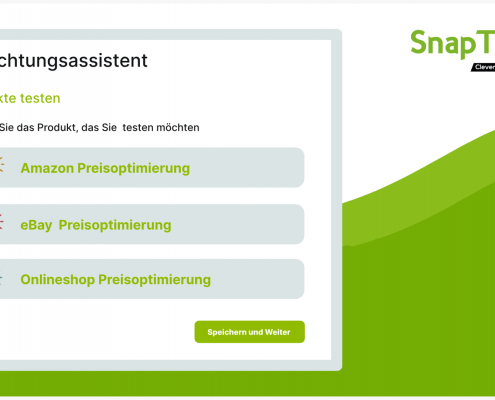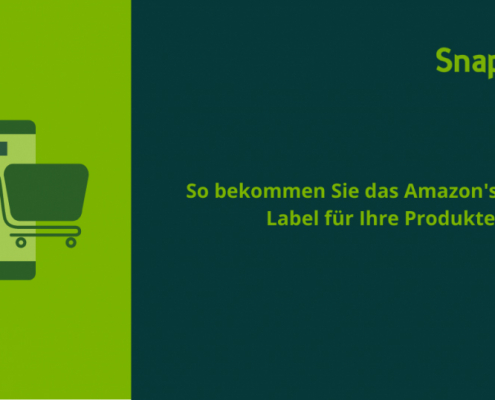Customer-oriented pricing: duel or duet?
In recent years, the majority of e-commerce retailers have already internalized that the behavior of the target group is the key to the success of an online store. While it is undoubtedly hard work to keep the e-commerce business running, retailers must constantly come up with new ideas and strategies in order to achieve growth and customer satisfaction. In addition to customer loyalty, a customer-oriented pricing strategy is one of the most important criteria. Fortunately, it is possible to kill two birds with one stone. It seems sensible to align the price with your own business objectives and at the same time take into account the needs of the consumer. Read this blog post to find out why and how you as a retailer can make your prices customer-oriented without losing margin.

But what is customer-oriented pricing anyway?
Customer-oriented pricing aims to determine the price that your customer is willing to pay for your product or service. At the same time, you must take into account the price that you as a retailer would like to achieve for a product. The focus here is on your customer’s (buying) behavior. In order to find out what price your customers are willing to pay, you need to take targeted action. In e-commerce, many retailers tend to use surveys. With the help of various online marketing measures, these surveys can be carried out relatively easily in order to address a broad mass of people and obtain valid results. Ideally, you should plan these surveys before launching a product and repeat them as you go along. It is important to bear in mind that your customers’ experiences with the product change their price perception and willingness to accept certain prices. As an e-commerce retailer, you should consider the following questions in this context:
- Is the customer prepared to pay a fixed price for the product?
- What is the maximum price the customer would pay for a particular product?
- How high is the price that the customer would pay for the product?
Customer loyalty through customer-oriented pricing policy
In view of the great importance that price has for many customers, a customer-oriented strategy is a particularly important task if you want to retain customers in your business in the long term. Because only those who manage to tap into their customers’ price awareness and use this knowledge to shape their pricing policy in a customer-oriented way will be able to satisfy their customers in the long term and retain them for their products and services. The good news is that price policy marketing measures can usually be implemented with a small budget.
But is it even possible to combine two opposing goals between willingness and interest? Pricing policy aims to maximize customers’ willingness to pay and thus generate the highest possible turnover. In contrast, customers are interested in achieving the best possible purchase price. This shows that the customer-oriented pricing policy offers the potential to build customer loyalty if the price is defined from the customer’s point of view rather than the retailer’s.
Price optimization in online trading – a curse or a blessing? In this blog post we clarify!
Price perception from the retailer’s perspective
From a retailer’s perspective, a price bid has two goals. On the one hand, it must of course cover the internal costs associated with the entrepreneurial activity, and on the other hand, it optimally generates a planned profit. However, this cost-focused perspective from the company’s point of view neglects one thing: the subjective price perception on the customer side.
Price perception from the customer’s point of view
For a customer, the price is what he has to pay to buy a product. However, these costs do not end – as from the retailer’s perspective – with the purchase of the product. Rather, they often just begin and extend over a longer period of time. Consequently, it is not only the sales price that is decisive, but all expenses associated with the product and its use.
In addition to the costs for the product and its use, the customer incurs additional expenses when making a purchase. In bricks-and-mortar retail, for example, these are the costs and effort of traveling to the place of purchase, the parking fee incurred on site and obtaining price comparisons. Delivery costs are incurred in e-commerce in particular. A customer-oriented pricing policy takes into account how your customer subjectively perceives the price. It sees the price as a marketing tool, as the price creates an emotional bond between the customer and your product and your company.
Understanding customer needs
In order to successfully implement a customer-oriented pricing policy, you need to understand the diverse needs of your customers. Only if you analyze these needs in detail and individually will you be able to better tailor your pricing strategy to the requirements of your target group. Customers’ needs can vary greatly and range from financial considerations to emotional aspects. A thorough investigation of these needs requires not only quantitative data, but also qualitative insights. You can ask your customers directly, observe their behavior or analyze feedback from social media. Once you have identified customer needs, you should understand how these can affect your pricing. For example, customers who are particularly value-driven may prefer a pricing structure that emphasizes perceived value. Price-sensitive customers may be more responsive to discounts and special offers. In the next step, you can incorporate these findings into the development of individual pricing models in order to find the optimal balance between customer satisfaction and profitability. Important factors here are, for example, what benefit the customer gets from your product or how often they use the product. However, setting up such models requires not only a technological infrastructure, but also clear communication to convey the added value of these individual approaches to customers. A deep understanding of customer needs is therefore the foundation for a customer-oriented pricing policy that not only takes financial aspects into account, but also strengthens the emotional connection to the customer.
Examples of customer-oriented pricing
By focusing not only on the product itself, but also on the promised effect, the retailer assumes the customer’s usage risk. This helps to increase the customer’s price awareness and trust. In some markets, it is possible to enrich the product with additional services and market both together. One example of this is the service offered by drinks manufacturers who deliver a fixed selection and number of drinks directly to the home or office of private and business customers for a fee. By taking over the entire logistics, from delivery to collection of the bottled goods, the procurement costs for customers are reduced. This in turn has a positive impact on customer loyalty. Flat-rate prices, as are common in the telecommunications industry, offer users the security of purchasing a predetermined quantity of units for a fixed amount. This transparent price structure creates trust and security among buyers, who are prepared to accept a higher price for this certainty. Price satisfaction increases in this context, which in turn promotes customer loyalty. Price bundling, where a retailer offers various goods at a single price, also contributes to customer loyalty. If the total price is generally lower than the sum of the individual prices, this results in increased price satisfaction among customers. Furthermore, transparent pricing, as can be found in shopping cart configurators in e-commerce, for example, helps to reduce shoppers’ fear of hidden costs in the long term. The clear presentation of the costs for the selected configuration increases price satisfaction and thus promotes customer loyalty.
Conclusion
Suppliers with a customer-oriented pricing policy can exert a targeted influence on the price satisfaction of their customers and thus increase customer loyalty while still selling with a focus on margins. The biggest advantage compared to other customer loyalty measures is that your costs are comparatively low. The most important prerequisite here is that you know the pricing behavior of your target group precisely. Customer loyalty should be the focus of your business and increases your success, because: Loyal customers buy more often, loyal customers buy more and of higher quality, loyal buyers are more generous, loyal customers are immune to other suppliers, loyal customers act as free salespeople.
About the author

Christopher Natan ist seit 2018 technischer Kundenberater bei SnapSoft und daher bestens mit SnapTrade und aktuellen Themen rund um die Preisoptimierung vertraut. Als Schnittstelle zwischen Kunden und Produktentwicklung trägt er maßgeblich dazu bei, dass die Wünsche und Anforderungen unserer Kunden in die Weiterentwicklung von SnapTrade erfolgreich einfließen.
Frequently asked questions about customer-oriented pricing policy
Why is a customer-oriented pricing policy important for companies?
A customer-oriented pricing policy is crucial as it enables companies to tailor their prices to the specific needs and expectations of their customers. This not only creates closer customer loyalty, but also promotes trust and satisfaction, which ultimately leads to long-term business relationships. Focusing on customer needs also makes it possible to develop differentiated and value-based pricing models.
How can a customer-oriented pricing policy strengthen customer loyalty?
A customer-oriented pricing policy helps to strengthen customer loyalty by responding to the individual needs, preferences and values of customers. The implementation of personalized pricing models, transparent pricing structures and additional service offerings not only creates added value for customers, but also shows that the company takes their requirements seriously. This leads to increased satisfaction and a deeper connection between the company and its customers.
What challenges can arise when introducing a new pricing strategy?
The introduction of a new pricing strategy can face various challenges, including potential skepticism or resistance from customers. Effective communication is key to informing customers about the reasons for the change and addressing any concerns. It may also be necessary to adapt internal processes and systems to seamlessly implement the new pricing strategy. Careful planning, clear communication and active management of customer feedback are therefore key factors for success when switching to a customer-oriented pricing policy.











